The artist who recreates the faces of the unknown dead
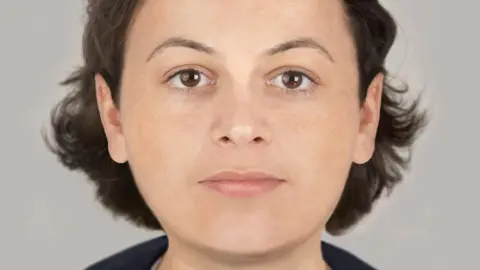 Hew Morrison
Hew MorrisonThe faces staring back from Hew Morrison's images pose unanswered questions. Who were these people - and why did they die?
Hew is a forensic artist who painstakingly creates facial reconstructions in an attempt to solve cold cases which can date back decades.
The police and missing persons charity Locate International are among those who have asked for his help.
They hope that a lifelike image can help them identify these unknown victims long after all other efforts have drawn a blank.
Hew says the work can be tough.
The information he has to work with often includes graphic pictures of their bodies after they were discovered.
"You are working with sensitive images of dead people," he says.
"Some of them died under quite unpleasant circumstances."
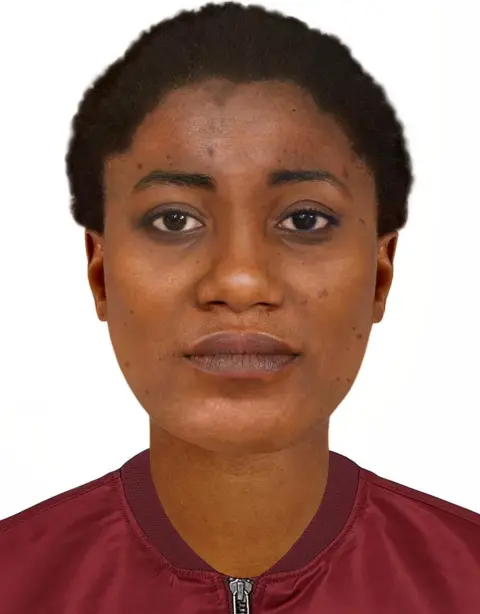 Hew Morrison
Hew Morrison
Hew's most recent reconstructions have included one of an unidentified woman who became known as the Wembley Point Woman.
She was found dead in a river at the foot of the London building - now called the WEM Tower London - on 29 October 2004.
Witness told Locate International that they saw the woman looking "distressed" in a lift of the building shortly before her death.
She was buried in Carpenders Park Lawn Cemetery, near Watford, in a common grave with no name.
Another of Hew's images was created to help identify a young woman whose body was pulled from the River Thames in London 45 years ago.
Dubbed the Lady in the Thames, she is estimated to have been aged between 30 and 35 when she died. Hew's reconstruction was created using images taken at the scene in 1977.
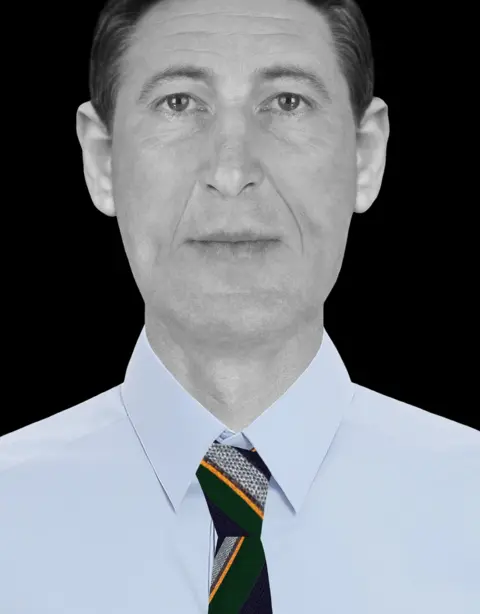 Hew Morrison
Hew Morrison
Then there is the mystery of a well-dressed man known as The Gentleman, whose body was recovered by a border guard patrol boat from the North Sea near Germany's Heligoland archipelago in 1994.
Hew's reconstruction was part of a renewed effort uncover his identity earlier this year.
The man had injuries on his head and body that suggested he had been the victim of a violent assault. His body had also been weighed down using two cast-iron shoe lasts, foot-shaped tools used by shoemakers to make or repair footwear.
University researchers, German Police Academy of Lower Saxony and Locate International have been collaborating in an effort to find out who he was.
The efforts to find the identities all three of these unknown people are continuing.
Hew uses computer software to create his images.
For reconstructions from a skull, he will gradually add virtual tissue, muscle and skin in what he describes as "digital sculpting".
DNA data, if available, helps determine hair and eye colours.
"With facial reconstruction it is the anatomy of a skull that does the talking," says Hew.
"The skull is the scaffolding of a face."
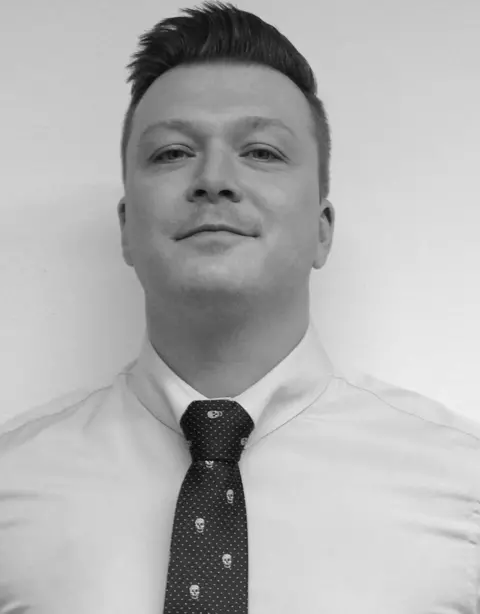 Hew Morrison
Hew Morrison
With some of the active missing person cases, Hew is able draw on information about a person's lifestyle to help create an image showing how they may have aged since the time they disappeared.
"I take into consideration a person's lifestyle history as that will affect a person's appearance," he says.
"How our health is will predominantly show in our faces."
Locate International said it often asked for a facial reconstruction after all other reasonable lines of Inquiry had been exhausted.
The charity's chief executive officer, Dave Grimstead, said that an image which the public could relate to was "a key element" in its appeals, and one of Hew's reconstructions had helped to solve a recent private case.
"Hew's work has made a significant difference in advancing our work on cold cases," he added.
"We are an entirely volunteer-led charity and Hew provides his services at no cost as he shares the same desire to find justice."
Mr Grimstead that in many cases, the images of the deceased were not suitable to show to family or friends, or to publish online.
"Hew provides a post-mortem depiction that creates a sensitive image that can be used when trying to confirm an identity with families," he said.
"In a recent case friends were able to make an identification that had remained unsolved for decades as a result of the image Hew produced."
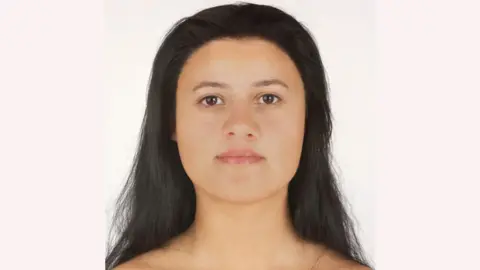 Hew Morrison
Hew MorrisonHew's facial reconstructions have taken him down a different path to the one he had originally envisaged.
As a student, he studied fine art painting at Edinburgh School of Art.
"I saw myself having a career making abstract paintings and landscapes, and maybe doing some sculpture," he says.
But Hew, from Inverness, also has had a long fascination with the process of police detective work.
When he was growing up he loved reading Ian Rankin crime novels and watching the Taggart TV detective shows.
After art school, he decided to pursue this further. Hew studied forensic art at the University of Dundee and has been working in the field since 2014.
But it was a facial reconstruction of 4,250-year-old Bronze Age woman, nicknamed Ava, that really kicked off his career.
Hew had read a BBC story about new analysis of the woman's skull and other remains, which were discovered at Achavanich in Caithness in 1987.
He approached the archaeologist leading the project and created a reconstruction of Ava's face through studies of her skull and information gleaned from ancient DNA research, which provided clues to her eye and hair colours.
Hew's other historical reconstructions since have include of John Bellingham, who assassinated British prime minister Spencer Perceval in 1812, and Bonnie Prince Charlie.
Those works were helped by written records, paintings - and Bonnie Prince Charlie's death mask, a cast made of a his face after he died.
All images are the copyright of Hew Morrison.
